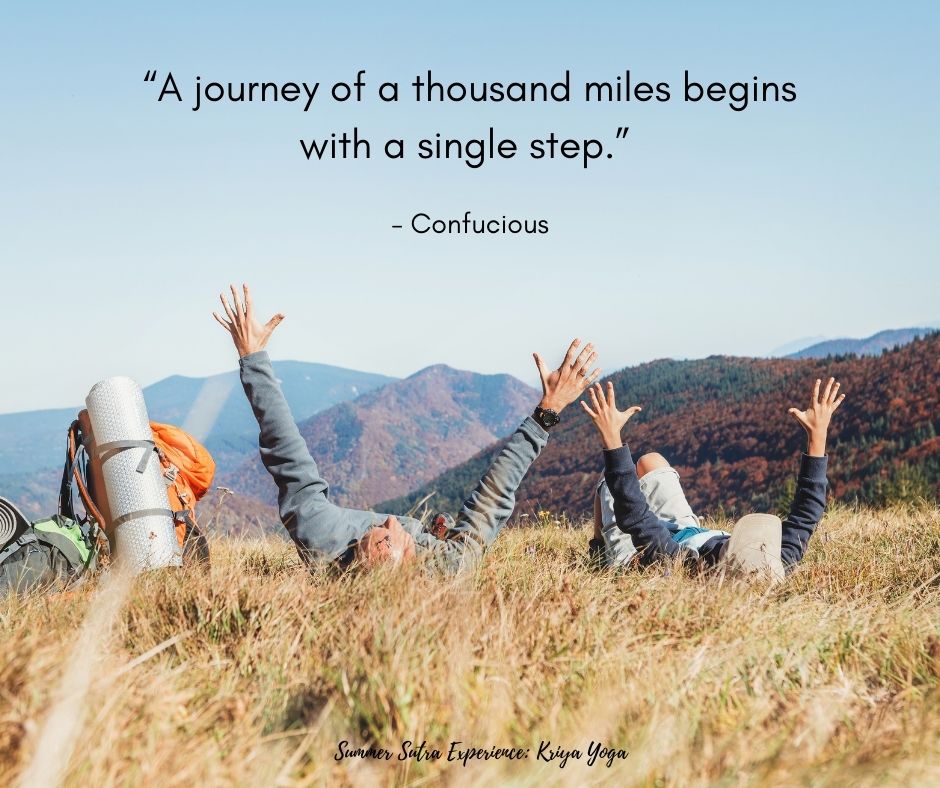SSE Week 13: Kriya-Yoga
Introduction to Kriya-Yoga
“Real inner transformation can occur when we deliberately investigate why we act or react the way we do. Understanding what our longstanding behavioral patterns are and what caused them in the first lace provides the opening we need to change the ways we things and act. This practice of self-transformation could be the most difficult part of our journey through yoga. Faith in ourselves and in the universe supporting this endeavor will allow the process to bear fruit” – Nicolai Bachman
I cannot believe we’re already in our final week!!!! I sincerely hope these lessons and learnings have impacted you as much as they have me. I’ve so enjoyed revisiting the yamas and niyamas and their corresponding principles with you.
Our Sutra Summer concludes with a look at kriya yoga, or practice in action. Nicolai Bachman summarizes Patanjali’s definition of it in his book, The Path of the Yoga Sutras, as “a set of synergistic tools that bring about inner change.” Kriya yoga includes the last three of the five niyamas, or personal self-care practices: Tapas, svadhyaya, and ishvara pranidhana. When practiced together, these three niyamas form a triad which “becomes a powerful mechanism for learning and growth.” Although kriya yoga is relatively easy to understand, it can be “quite difficult to implement since it involves real, on-the-ground change of our personality [….] Since each component informs the others, change is more profound and noticeable when they are practiced together.”
Kriya yoga is meant to act as a sort of jumping off point for practice and integration of the eight limbs of yoga (ashtanga yoga) as a whole. I liken the process of kriya yoga to that of a mindfulness practice, since both modalities look into the underlying causes, the roots, of our behaviors, thoughts, emotions, and the way we experience the world and ourselves; and to use that information to insight positive change, leading to a more easeful life experience. In particular, the practices involved in kriya yoga
cause our reactions to previously uncomfortable or painful events to diminish, eventually transferring them into conscious and positive actions because the events no longer push any of our buttons. This transformation clarifies and purifies our heart mind field (citta-prasadana), allowing us to focus our attention fully and perceive things as they are.
In short, the goal of yoga and eight limbed path as outlined in Patanjali’s Yoga Sutras, is enlightenment, or samadhi; kriya yoga is the seed. As Bachman concludes, “Kriya-yoga is the seed for the eight limbs of yoga [….] The threefold set of tools is to be integrated into the other practices. Inner growth involves changing the way we look at things, the way we operate, and our attitudes and expectations […. Ultimately, t]he purpose of kriya-yoga is twofold: to weaken our mental-emotional afflictions (klesha-s) and cultivate complete attention (samadhi).
Home Exercise: Kriya-Yoga
Think of some of the things you do, whether regularly or sporadically, that bring true joy, alignment, and fulfillment to your life. Free write about why; how you feel when you engage in these things; how you feel after as opposed to before; and any other details that come up for you — the more specific you can get, the better!
Relate back to your edited mantra/affirmation/intention:
-
Do any of the activities you’ve listed correspond to, or align with that mantra/affirmation/intention?
-
What kind of small, actionable steps can you take, starting RIGHT NOW, to engage in this activity more consistently?
-
Can you invest your time, energy, resources, and faith in this practice?
If you find yourself already countering yourself with time restraints or too many other things to do, ask yourself if all those other things you’re “supposed” to be doing give you as much fulfillment and invoke as much faith and joy as the activity you’ve highlighted today. Then, replace one of your daily to-dos with this hear-driven activity, and MAKE IT A PRIORITY, just as important as anything else.
“Diminishing inner pain requires proactive change, self-observation, and acceptance of progress.”
– The Path of the Yoga Sutras
Watch this Week’s Video
Bring Kriya-Yoga into Practice

Sharable image for Facebook

Sharable image for Instagram
